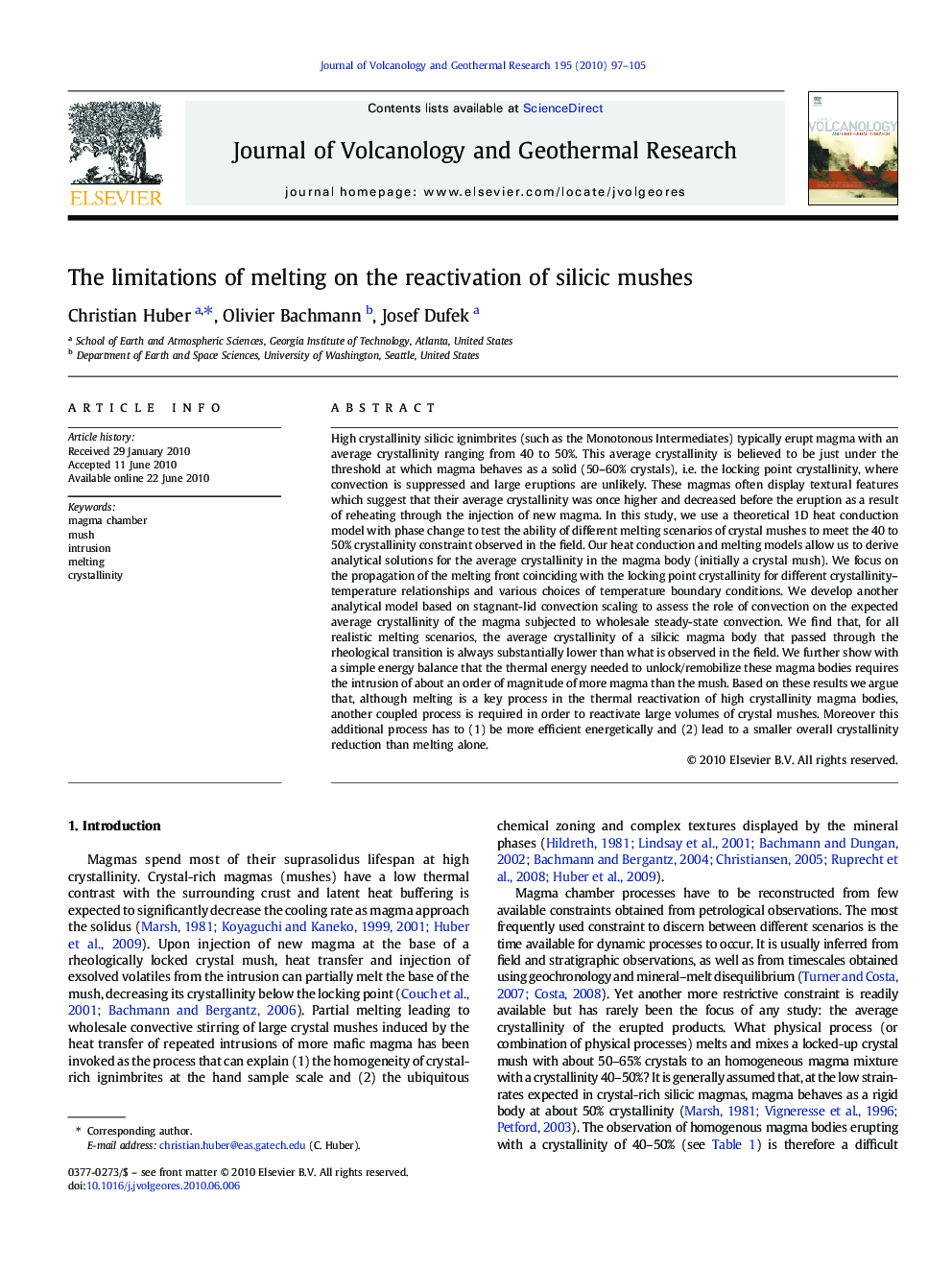| کد مقاله | کد نشریه | سال انتشار | مقاله انگلیسی | نسخه تمام متن |
|---|---|---|---|---|
| 4713869 | 1638416 | 2010 | 9 صفحه PDF | دانلود رایگان |

High crystallinity silicic ignimbrites (such as the Monotonous Intermediates) typically erupt magma with an average crystallinity ranging from 40 to 50%. This average crystallinity is believed to be just under the threshold at which magma behaves as a solid (50–60% crystals), i.e. the locking point crystallinity, where convection is suppressed and large eruptions are unlikely. These magmas often display textural features which suggest that their average crystallinity was once higher and decreased before the eruption as a result of reheating through the injection of new magma. In this study, we use a theoretical 1D heat conduction model with phase change to test the ability of different melting scenarios of crystal mushes to meet the 40 to 50% crystallinity constraint observed in the field. Our heat conduction and melting models allow us to derive analytical solutions for the average crystallinity in the magma body (initially a crystal mush). We focus on the propagation of the melting front coinciding with the locking point crystallinity for different crystallinity–temperature relationships and various choices of temperature boundary conditions. We develop another analytical model based on stagnant-lid convection scaling to assess the role of convection on the expected average crystallinity of the magma subjected to wholesale steady-state convection. We find that, for all realistic melting scenarios, the average crystallinity of a silicic magma body that passed through the rheological transition is always substantially lower than what is observed in the field. We further show with a simple energy balance that the thermal energy needed to unlock/remobilize these magma bodies requires the intrusion of about an order of magnitude of more magma than the mush. Based on these results we argue that, although melting is a key process in the thermal reactivation of high crystallinity magma bodies, another coupled process is required in order to reactivate large volumes of crystal mushes. Moreover this additional process has to (1) be more efficient energetically and (2) lead to a smaller overall crystallinity reduction than melting alone.
Research highlights
► Melting of mushes leads to crystallinity reduction > than observed in the field.
► Enthalpy cost for the reactivation requires intrusion volumes > mush.
► A more efficient process with smaller crystallinity reduction is required.
Journal: Journal of Volcanology and Geothermal Research - Volume 195, Issues 2–4, 30 August 2010, Pages 97–105